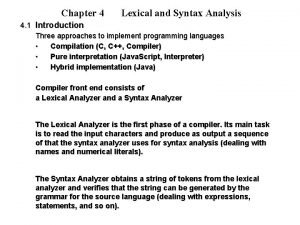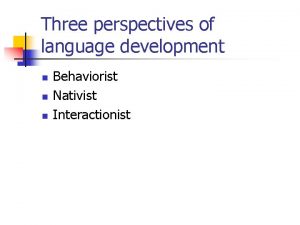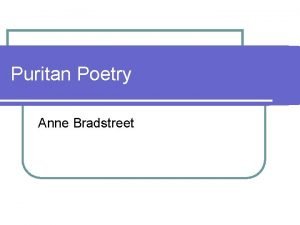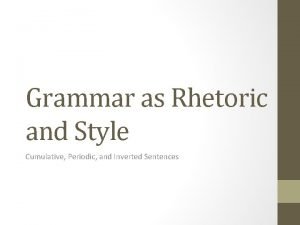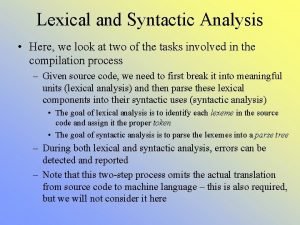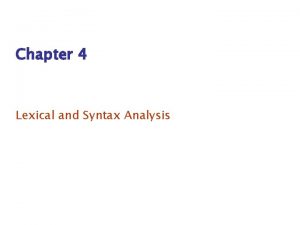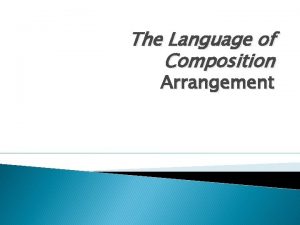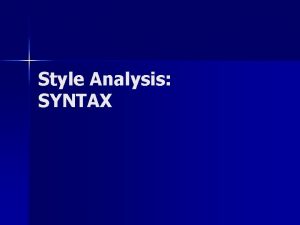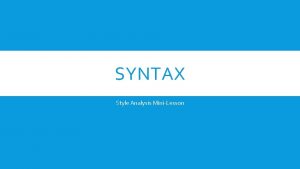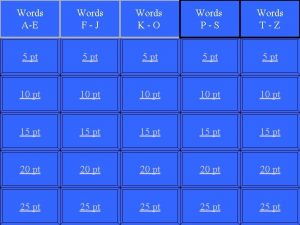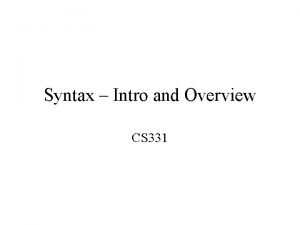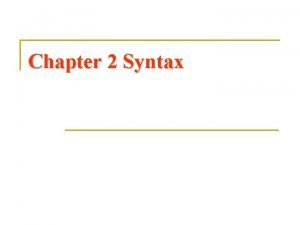Style Analysis SYNTAX SYNTAX Arrangement of words and










- Slides: 10

Style Analysis: SYNTAX

SYNTAX – Arrangement of words and phrases in sentences. – Includes: n sentence variety n Repetition n parallel structure n word order n punctuation patterns n Rhythm n cadence

What to watch for… 1. 2. 3. 4. 5. 6. 7. 8. 9. 10. 11. specific phrasing patterns length of sentence (long or short) number of sentences divisions within a piece with different syntax parallel structure different sentence types (simple, compound, complex, cumulative, loose, or periodic) specific kinds of punctuation rhythm and cadence in a sentence repetitions subject openers and non-subject openers rhetorical questions

Guided Practice Sample First, Read Lincoln on your own. n Then, Read (as a class) Abraham Lincoln’s “Gettysburg Address” n Practice making observations about Lincoln’s syntax (Look at your notes for “What to watch for” and annotate). n

Four score and seven years ago our fathers brought forth on this continent, a new nation, conceived in Liberty, and dedicated to the proposition that all men are created equal. Now we are engaged in a great civil war, testing whether that nation, or any nation so conceived and so dedicated, can long endure. We are met on a great battlefield of that war. We have come to dedicate a portion of that field, as a final resting place for those who here gave their lives that nation might live. It is altogether fitting and proper that we should do this. But, in a larger sense, we cannot dedicate—we cannot consecrate—we cannot hallow—this ground. The brave men, living and dead, who struggled here, have consecrated it, far above our poor power to add or detract. The world will little note, nor long remember what we say here, but it can never forget what they did here. It is for us the living, rather, to be dedicated here to the unfinished work which they who fought here have thus far so nobly advanced. It is rather for us to be here dedicated to the great task remaining before us—that from these honored dead we take increased devotion to that cause for which they gave the last full measure of devotion—that we here highly resolve that these dead shall not have died in vain—that this nation, under God, shall have a new birth of freedom— and that government of the people, by the people, for the people, shall not perish from the earth.

Syntax Paragraph: Topic Sentence n The author’s syntax moves from ______ to _______ and finally to____. EXAMPLE: n The syntax moves from long and blunt to choppy and descriptive and finally to unceasing and rhythmic. [Notice how each section– beginning, middle, and end– has its own description)

Syntax Paragraph: Concrete Detail Sentence Quotes are rarely, if ever, used for a discussion of syntax. n Summarize or paraphrase each section in your example sentences. EXAMPLE: n In the beginning, Lincoln uses one long sentence with inflections at the end of each clause. n

Syntax Paragraph: Commentary Sentences Commentary analyzes the significance of the summary (CD) and discusses why the author chose this syntax. EXAMPLE: n Initially, Lincoln uses one long sentence with inflections at the end of each clause. The length mirrors the preparation of the nation and proceedings of war itself, while the cadence gives a sense of continual perseverance and progression. Lincoln’s syntax choices emphasize the increasing magnitude of what is to follow. n

Sample Syntax Paragraph (handout) The syntax moves from long and blunt to choppy and descriptive and finally to unceasing and rhythmic. Initially, there is one long sentence with inflections at the end of each clause. The length mirrors the preparation of the nation and the proceedings of war itself, while the cadence gives a sense of continual perseverance and progression. Lincoln’s syntax choices emphasize the increasing magnitude of what is to follow. In the middle, the piece is characterized by a long-short-long series connected by complex parallels. Resembling the march-fightmarch movement of war, Lincoln’s writing is strategic and yet ironically softened by the music of the parallel structure. He uses the see-saw style to illustrate the frequent close connection between death and duty. Finally, however, the sentences are again connected by many dashes. Lincoln’s consistent elaboration reassures the people that continuing war is indeed a noble cause. He does this to remind the audience over and over again of the present needs of the country. Thus, the syntax follows a circular path; grammatical structures tie the beginning and ending together just as the speech ties together the past and future of a nation.

Frederick Douglass passage 1. 2. 3. Refer to your tone words and rhetorical device packet. Divide the passage into three sections– beginning, middle, end Write a THREE-CHUNK paragraph that analyzes how Douglass shifts his syntax in this particular passage to convey tone.

